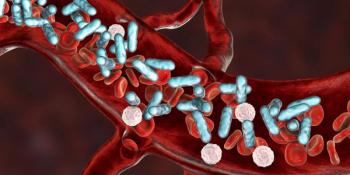
Is Prevention of AML on the Horizon?
In a large international study, pre-AML cases had greater clonal expansion and enrichment of specific gene mutations; origins of AML were detected > 5 years before it developed.
There may be identifiable mutations that can single out individuals at high risk of developing acute myeloid leukemia (AML), according to a
The study found that blood tests looking for changes in the DNA code can reveal the roots of AML in healthy individuals. Further research could one day allow earlier detection and monitoring of people at risk of developing AML, and raise the prospect of developing novel ways to reduce the probability of its occurrence. The investigators noted that the incidence of AML increases with age, and the mortality rate is higher than 90% among patients diagnosed after age 65.
The researchers used information from the European Prospective Investigation into Cancer and Nutrition (EPIC)
The scientists, including researchers from the Princess Margaret Cancer Centre in Canada and the Weizmann Institute in Israel, sequenced the stored blood DNA from 124 AML patients and compared it to blood DNA from 676 individuals who remained free of AML or a related cancer. They found that pre-AML cases were distinct from the controls in that they had more mutations per sample and higher variant allele frequencies. These pre-AML cases also showed greater clonal expansion and enrichment of mutations in specific genes. As part of their investigation, the researchers developed a model that accurately predicted AML-free survival. They validated the model in an independent cohort of 29 pre-AML cases and 262 controls.
The authors noted that recurrent AML mutations also accumulate in preleukemic hematopoietic stem and progenitor cells during normal aging in people who do not develop AML; this is known as age-related clonal hematopoiesis, or ARCH. They used deep sequencing to analyze genes that are recurrently mutated in AML to distinguish between benign ARCH and ARCH in people at high risk of developing AML. ARCH as defined based on putative driver mutations (ARCH-PD), was found in 73.4% of the pre-AML cases at a median of 7.6 years before diagnosis, compared with 36.7% of controls (P < 2.2 × 10−16, by two-sided Fisher’s exact test).
The researchers were surprised to find that the origins of AML are generally detectable more than 5 years before the disease develops, since it often appears very suddenly. Senior author Moritz Gerstung, PhD, from the EBI, said it may also be possible to identify genetic differences before other types of blood cancers develop, so the current study findings in AML may have implications for the management of other leukemias.
Anthony Magliocco, MD, the chair of Anatomic Pathology at Moffitt Cancer Center, Tampa, Florida, said this is an important study that could quickly lead to strategies for prevention of AML. “Earlier detection of those at risk could allow them to be enrolled in prevention studies, such as lifestyle modification, or [perhaps] therapy with chemoprevention agents. So, it is likely there would be a potential benefit. Also, early detection would allow accurate diagnosis and possibly earlier treatment of associated complications, such as anemia or infection,” Dr. Magliocco told Cancer Network.
Newsletter
Stay up to date on recent advances in the multidisciplinary approach to cancer.


















































































